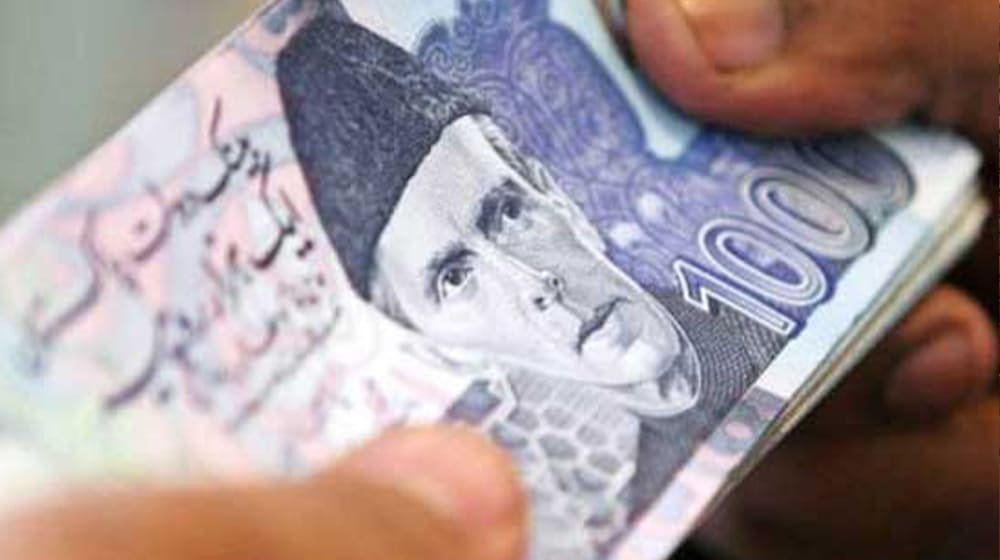The country’s fiscal deficit has increased to 4.0 percent of gross domestic product (GDP) or Rs. 2.56 trillion during the first nine months (July-March) of the current fiscal year due to higher subsidies and grants as compared to Rs. 1.65 trillion in the same period of the last fiscal year.
The consolidated data on fiscal operations for the first three quarters of the year released by the finance ministry on Wednesday showed that the government has bridged the budget deficit through borrowing from the external and domestic sides.
The primary balance was recorded at Rs. 447 billion during the first nine months of the current fiscal year. The government has borrowed Rs. 981 billion from the external side and Rs1584 billion from the domestic side to bridge the budget deficit during the nine months of the current fiscal year.
The figures show that the total expenditure grew by Rs. 1621 billion to Rs. 8,429 billion during the first nine months of the current fiscal year as compared to Rs. 6,808 billion during the same period of the last fiscal year. The data also shows that the current expenditure also surged by Rs. 1293 billion to Rs. 7,378 billion from Rs. 6,085 billion during the same period of the last fiscal year.
The current expenditure of the federal government surged to Rs. 5,210 from Rs. 4,157 billion. Out of the total current expenditure, the subsidies swelled by Rs. 371 billion to Rs. 575 billion from Rs. 204 billion while the other grants by the federal government more than doubled to Rs. 920 billion from Rs. 424 billion.
The debt servicing on domestic and external loans stood at Rs. 2,118 billion compared to Rs. 2,104 billion during the same period of the last fiscal year.
The defense budget increased by Rs. 98 billion to Rs. 882 from Rs. 784 billion while the expenditure for the running of civil government increased to Rs. 319 billion from Rs. 312 billion.
The development expenditure and net lending increased to Rs. 1,051 billion from Rs. 723 billion during the period.
The current expenditure of the provincial governments also increased to Rs. 2,168 billion from Rs. 1,928 billion during the nine months of the current fiscal year.
The total revenue swelled by Rs. 5,874 billion from Rs. 4,992 billion during the first nine months of the current fiscal year. The tax revenue increased by Rs. 4,822 billion from Rs. 3,765 billion during the period. The tax revenue of the federal government increased by almost one trillion to Rs. 4,384 billion from Rs. 3,395 billion while the provincial tax revenue increased by Rs. 68 billion to Rs. 438 billion from Rs. 370 billion.
The total non-tax revenue decreased to Rs. 1,052 billion from Rs. 1,227 billion mainly due to a reduction in petroleum levy during the current fiscal year as compared to the same period of the last fiscal year. The non-tax revenue of the federal government reduced to Rs. 958 billion from Rs. 1,145 billion while the non-tax revenue of provincial governments increased to Rs. 94 billion from Rs. 82 billion during the first nine months of the current fiscal year.
Commenting on the figures, Mohammed Sohail of Topline Securities said in a tweet that the Rs. 1.2 trillion increase in 3 months (2% of GDP) is huge. He added that with no money printing allowed, the government will borrow from the market to finance this gap which will lead to high interest rates and a slowdown in the economy.
Not sustainable. This Rs 1.2 trillion in 3 months (2% of GDP) is huge. With no money printing allowed, gov will borrow from the market to finance this gap. Thus Higher interest rates, slowdown in economy @MiftahIsmail @StateBank_Pak https://t.co/LPztzxTUFm
— Mohammed Sohail (@sohailkarachi) April 26, 2022


























No worries, the beggar is kicked out and now we shall fix our Pakistan